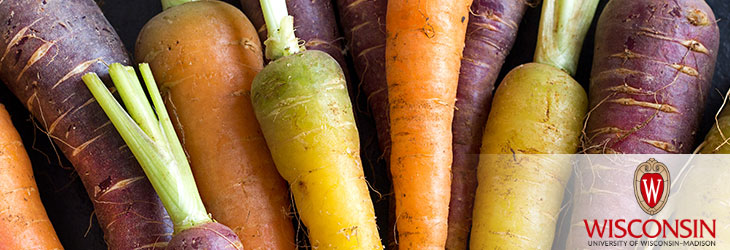Animals, Agriculture & Food

New Protein Production Strategy for Plants
WARF: P140069US02
Inventors: Aurelie Rakotondrafara, Jincan Zhang
The Wisconsin Alumni Research Foundation (WARF) is seeking commercial partners interested in developing an IRES sequence that functions in plants and enables multiple proteins to be expressed from the same mRNA strand.
Overview
In animals, plants and other eukaryotic organisms, typically one protein is translated from each mRNA. Usually, translation can start only at one end of the mRNA strand. In contrast, several viruses are known to contain internal ribosome entry sites (IRES) in their genetic material. An IRES allows translation to start in the middle of an mRNA sequence.
IRESs commonly are used by researchers to simultaneously express two different proteins from the same RNA transcript. But while IRESes have been licensed widely and used for protein production in animal systems, there has been less success with plants. If a plant-suitable IRES could be found, it may be highly useful for plant-based protein production, drug/biochemical production and the development of better biofuel crops.
IRESs commonly are used by researchers to simultaneously express two different proteins from the same RNA transcript. But while IRESes have been licensed widely and used for protein production in animal systems, there has been less success with plants. If a plant-suitable IRES could be found, it may be highly useful for plant-based protein production, drug/biochemical production and the development of better biofuel crops.
The Invention
UW–Madison researchers have identified a new plant viral IRES that can facilitate the efficient expression of multiple proteins from a single mRNA. The researchers discovered the new IRES in the Triticum mosaic virus (TriMV), a wheat virus that expresses 10 proteins from a single mRNA strand.
Applications
- Vectors for multigene expression in plant systems
- Driving various traits in crops (e.g., ‘stacking’ traits)
- Protein/enzyme production
Key Benefits
- Suitable in plant systems
- Efficient translation – 100 times stronger than previously discovered plant viral IRES sequences
- Could enable first commercially available multicistronic vector of its kind
- Effective even when positioned downstream of a stable hairpin structure
Stage of Development
The researchers have assessed the performance of the new IRES (and shortened variants) in wheat germ extract and in oat protoplasts. Results indicate that the sequence is at least twofold more active at driving translation than plant IRESes from Tobacco etch virus (TEV) and Turnip mosaic virus (TuMV).
Additional Information
For More Information About the Inventors
Tech Fields
For current licensing status, please contact Jennifer Gottwald at [javascript protected email address] or 608-960-9854